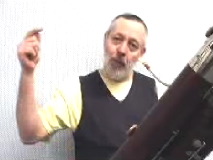
Talk about digital technology and music, and people are often skeptical: doesn’t technology get in the way of making music? But technology and music have always been interwined, and even for advanced composers, better understanding the technology of how acoustic instruments work is fundamental to realizing musical ideas. Unfortunately, orchestration books, despite their best intentions, can be disastrous for composers trying to understand instruments. Books by definition can’t include musical examples, and the texts themselves are often divorced from real practical information.
Now the good news: the Web could offer an antidote.
Check out this extensive site put together by the Philharmonia Orchestra:
The Sound Exchange: The Orchestra: Instruments
This is not the “young person’s guide to the orchestra” it first appears: click through, and you’ll find practical, opinionated thoughts on real-world playing from the orchestra’s players. Imagine “textbooks” where real players talk about playing, instead of the lone voice of a theorist.
That’s not to slam tried-and-true orchestration references, and in fact, we could see those develop, as well. Gary Garritan is working on realizing a completely free version of the classic Rimsky-Korsakov Principles of Orchestration, to be released on the Garritan forums. This one will make use of Garritan’s virtual orchestra so you can hear and see all the examples. It’s something of a modern technical acheivement in itself, really, that you could make a software-only orchestra sound like a real one, an exercise in artificial orchestration. The results are due this month; I’ll let you know when they appear.
Online resources promise not only to be free, but to cover instruments left behind by mainstream commercial textbooks. The next time you’re writing for the viola da gamba, for instance, you might actually get some useful advice.
Found online compositional resources you like? Let us know in comments.